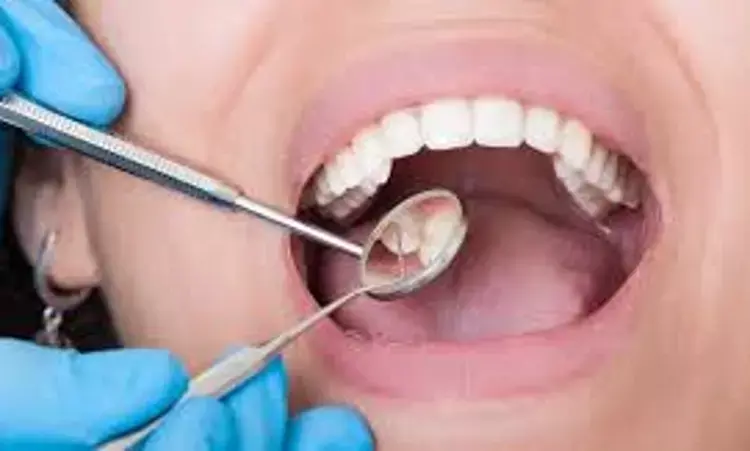- Home
- Medical news & Guidelines
- Anesthesiology
- Cardiology and CTVS
- Critical Care
- Dentistry
- Dermatology
- Diabetes and Endocrinology
- ENT
- Gastroenterology
- Medicine
- Nephrology
- Neurology
- Obstretics-Gynaecology
- Oncology
- Ophthalmology
- Orthopaedics
- Pediatrics-Neonatology
- Psychiatry
- Pulmonology
- Radiology
- Surgery
- Urology
- Laboratory Medicine
- Diet
- Nursing
- Paramedical
- Physiotherapy
- Health news
- Fact Check
- Bone Health Fact Check
- Brain Health Fact Check
- Cancer Related Fact Check
- Child Care Fact Check
- Dental and oral health fact check
- Diabetes and metabolic health fact check
- Diet and Nutrition Fact Check
- Eye and ENT Care Fact Check
- Fitness fact check
- Gut health fact check
- Heart health fact check
- Kidney health fact check
- Medical education fact check
- Men's health fact check
- Respiratory fact check
- Skin and hair care fact check
- Vaccine and Immunization fact check
- Women's health fact check
- AYUSH
- State News
- Andaman and Nicobar Islands
- Andhra Pradesh
- Arunachal Pradesh
- Assam
- Bihar
- Chandigarh
- Chattisgarh
- Dadra and Nagar Haveli
- Daman and Diu
- Delhi
- Goa
- Gujarat
- Haryana
- Himachal Pradesh
- Jammu & Kashmir
- Jharkhand
- Karnataka
- Kerala
- Ladakh
- Lakshadweep
- Madhya Pradesh
- Maharashtra
- Manipur
- Meghalaya
- Mizoram
- Nagaland
- Odisha
- Puducherry
- Punjab
- Rajasthan
- Sikkim
- Tamil Nadu
- Telangana
- Tripura
- Uttar Pradesh
- Uttrakhand
- West Bengal
- Medical Education
- Industry
Polymeric and inorganic nanoscopical agents effective in reducing Microbial infections in dentistry

Polymeric and inorganic nanoscopical agents are effective in reducing Microbial infection in dentistry, according to a recent study published in the Acta Biomaterialia.
The terms nanoparticle, nanomaterial, and nanotechnology came into use in the second half of the 20th century and are identified by researchers with innovation and progress in science and industry. Currently, a high-priority area in global science is manufacturing of materials that contain particles comparable in size with molecules, which are called nanoparticles.
A promising application area of composite nanomaterials is medicine, including dentistry, in which they are used for diagnosis, dental prosthetics, and prevention and treatment of diseases of the oral mucosa and hard tissues of teeth
Failure of dental treatments is mainly due to the biofilm accumulated on the dental materials. Many investigations have been conducted on the advancements of antimicrobial dental materials. Polymeric and inorganic nanoscopical agents are capable of inhibiting microorganism proliferation. Applying them as fillers in dental materials can achieve enhanced microbicidal ability. The present review provides a broad overview of the state-of-the-art research in the field of antimicrobial fillers which have been adopted for incorporation into dental materials over the last 5 years. The antibacterial agents and applications are described, with the aim of providing information for future investigations.
Microbial infection is the primary cause of dental treatment failure. The tooth surface normally loses some tooth minerals from the action of the acid formed by plaque bacteria after ingestion of foods containing fermentable carbohydrates. This mineral is normally replenished by the saliva between meals. However, when fermentable foods are eaten frequently, the low pH in the plaque is sustained and a net loss of minerals from the tooth occurs. This low pH selects for aciduric organisms, such as S mutans and lactobacilli, which (especially S mutans) store polysaccharides and continue to secrete acid long after the food has been swallowed.
The present review provides an overview of the state-of-art in the field of antimicrobial nanoscopical or polymeric fillers that have been applied in dental materials. Trends in the biotechnological development of these antimicrobial fillers over the last 5 years are reviewed to provide a backdrop for further advancement in this field of research.
Reference:
Polymeric and inorganic nanoscopical antimicrobial fillers in dentistry by Pooyan Makvandi et al. published in the Acta Biomaterialia.
https://doi.org/10.1016/j.actbio.2019.09.025
Dr. Shravani Dali has completed her BDS from Pravara institute of medical sciences, loni. Following which she extensively worked in the healthcare sector for 2+ years. She has been actively involved in writing blogs in field of health and wellness. Currently she is pursuing her Masters of public health-health administration from Tata institute of social sciences. She can be contacted at editorial@medicaldialogues.in.
Dr Kamal Kant Kohli-MBBS, DTCD- a chest specialist with more than 30 years of practice and a flair for writing clinical articles, Dr Kamal Kant Kohli joined Medical Dialogues as a Chief Editor of Medical News. Besides writing articles, as an editor, he proofreads and verifies all the medical content published on Medical Dialogues including those coming from journals, studies,medical conferences,guidelines etc. Email: drkohli@medicaldialogues.in. Contact no. 011-43720751


